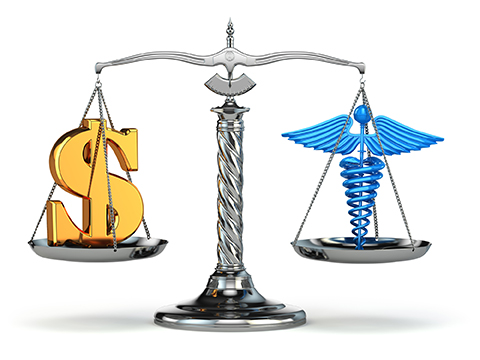Peter Micca, partner at Deloitte & Touche, LLP, has 30 years of experience in the healthcare and lifesciences sector. He brought his perspective on industry disruption in healthcare, the landscape of M&A and venture capital investment, and the convergence of medtech companies and technology companies during a recent Q&A with MedTech Intelligence.
MedTech Intelligence: What convergence are you seeing between medical device companies, other companies within life sciences (biotech/pharma) and healthcare providers? Is there also more patient involvement?

Peter Micca: I tend to look at this industry as three-pronged: Life sciences, healthcare providers and healthcare payers. Each of these areas has a specific function—research and development, delivering the care, and financing the care. We’ve seen a lot of disruption and accelerated change as we move toward a more informed consumer with more control, where physicians get paid based on quality outcomes.
The convergence we’re seeing has primarily been between healthcare payers and providers as they look to work together to drive better outcomes at a lower cost. On the life sciences side, there’s a new kind of convergence where medical device companies are working with pure technology companies to integrate monitoring tools for example, that can be either surgically implanted or worn by the consumer. Soon, today’s wearables could be replaced by invisible, always-on sensors embedded in devices surrounding us. For example, many medtech companies have begun incorporating always-on biosensors and software into devices that can generate, gather and share data. If advanced cognitive technologies were developed to analyze a significantly large set of parameters and create personalized insights into a consumer’s health, it might enable precision well-being and real-time microinterventions that allow individuals to get ahead of sickness and far ahead of catastrophic disease.
A number of non-traditional healthcare organizations and companies outside of healthcare are also collaborating to create monitoring devices that are now just getting to the consumer. The question remains, however, how much does the consumer want that and who’s going to pay for it?
For the consumer, it ultimately comes down to trust and what they believe the benefits are versus the risks or consequences. Convenience, quality and better outcomes at a lower cost are a few of those potential benefits consumers might experience.
MTI: What specific product niches are receiving more interest on the M&A front? What trends are happening here?
Micca: The first that comes to mind is medical devices. We don’t see a lot of consolidation there, rather larger medtech companies are acquiring adjacent assets, in either digital or health technology spaces.
In healthcare, we’re seeing more consolidations in the home health industry, which will impact the medical device space. As consumerism rises, consumers are taking control of their own health and wellness by trying newer at-home monitoring solutions.
A lot of these digital health companies could end up disrupting the medical device companies. For example, what if instead of a stent, a doctor could insert a monitoring device? That capability would ultimately put stents out of business. Medical device companies are asking themselves, how can we play in the existing market? What opportunities exist for us? The answer may come from increased focus on prevention and early intervention, combined with the types of advances in biosensors and digital technology mentioned previously. However, they may need help to take advantage of the opportunities. In fact, more than 80% of medtech companies expect to collaborate with organizations from outside of the health sector, according to a survey by the Deloitte Center for Health Solutions and AdvaMed.
MTI: Where does venture capital investment in the medtech industry stand? What changes is the industry experiencing?
Micca: The medtech industry’s focus is on medical devices, but increasingly organizations are realizing that they cannot operate in sub-sector silos. In the healthcare provider space specifically, the sectors are interdependent and medical device companies need to understand how hospitals get reimbursed and, more recently, how they are reimbursed on emerging technologies.
Larger medical device companies are either building their own capabilities or are looking to acquire another company. They also tend to be aware of the trends in the space and have a pretty good idea of the challenges they might face. Ultimately, in order to stay competitive or to become leaders in the space, larger companies must embrace the convergence and digitization that surrounds them.
On the other hand, for a smaller company or a startup, it’s very different. They should really try to define and understand their value proposition as best they can. They should also try to identify where they fit into the bigger supply chain and what their role is in the broader medtech space. And remember: You don’t have to be all things to all people.
MTI: Additional comments are welcome.
Micca: Accelerating technology adoption is transforming the medtech sector, and as a result, non-traditional companies are continuing to increase investments in healthcare. The trend is expected to continue, further driven by repatriated profits under new tax laws.
Additionally, the IPO scene is pretty hot right now for life sciences, research and development, therapeutics and biotech. There isn’t much of an IPO market for pure medical device companies, but there is one for digital health and health technology companies.







